FMJ, JHP, HPBT, CPHP, LRNFP, SWCHP — there are a lot of acronyms to learn when you’re first immersing yourself in the world of bullets. But when considering which bullet is best suited for any given task, you’ve also got to consider bullet weight as well. How does a bullet’s heft impact its performance? I’ll tell you.
Bullet Weight Quick Guide:
The lighter the bullet, the faster it generally moves from your firearm. Lighter bullets generally mean less recoil.
The heavier the bullet, slower it moves when fired from your firearm. Heavier bullets can offer more stability in the air, with some exceptions.
Grains – How We Measure Bullet Weight
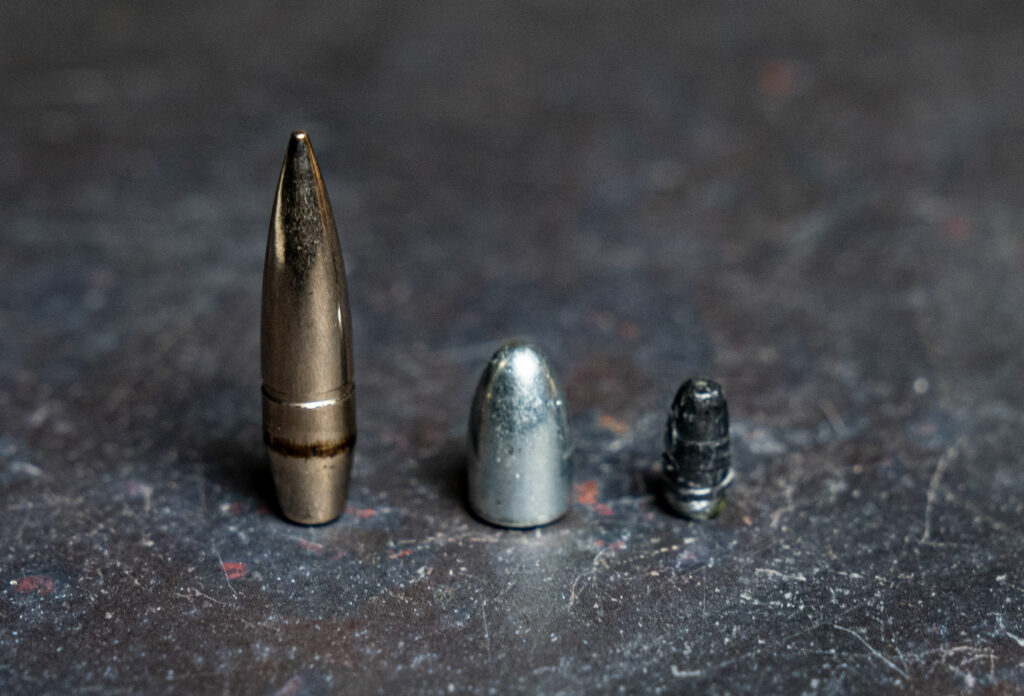
A 7.62×51, 9mm and 22lr bullet lined up on a table.
A bullet’s weight is measured in grains. There are 437.5 grains to one ounce. The unit’s name used to be more literal. It dates back to ancient times when traders used common goods to create a lexicon of measurement.
Just like feet, barrels, and hogsheads have endured as standard units of measurement, so too has the grain. (Don’t fall for European tricks — our system of measurement is better than the metric system, at least so long as there’s only one flag on the moon!)
The weight that a bullet can be depends largely on its caliber. The 2mm Kolibri has a three grain bullet; The 950 JDJ has a 3600 grain bullet. That’s a slightly more than a half pound bullet!
Within any caliber, a range of bullet weights may be available. The best known example of this might be 9mm ammo, which is most commonly available with either a 115, 124, or 147 grain bullet.
Impact of Weight on Recoil
Perhaps the greatest aspect of performance that a bullet’s weight influences is recoil. For a 147 grain bullet to achieve the same velocity out of the muzzle as a 115 grain bullet, it would have to have greater force behind it. Newton’s Third Law, which is the one about actions and reactions, dictates that a heavier bullet would thus generate more recoil in that instance.
However, a given caliber’s heaviest bullet doesn’t necessarily achieve the same muzzle velocity as its lightest one. Indeed, a heavier bullet travels more slowly and that may be its selling point, as is the case of the 300 AAC Blackout’s long 200 grain bullet. It may not break the sound barrier, and accordingly better complements the performance of an attached suppressor.
Why Use A Light Bullet?
A lightweight bullet’s lesser recoil makes it better for novice shooters, as well as those firearms with lighter frames.
Consider whether you would rather teach a child to shoot with a 22 LR rifle or an elephant gun. It’s not a hard choice (unless the kid is a brat!) The 22lr bullet won’t generate recoil that would send the child flying off in the other direction. The elephant gun… that could get children’s services at your door.
What’s more, many self-defense experts prefer the 9mm’s lightweight 115 grain bullet. It generates less recoil and thus less muzzle flip than heavier bullets, which facilitates accurate rapid fire. In other words, you can more accurately put several rounds on target.
Why Use A Heavier Bullet?
One virtue of a heavier bullet is that it is better able to resist the influence of wind drift. A sniper working against strong, lateral gusts may choose a heavier bullet to do their job. However, because a heavier bullet tends to travel and rotate more slowly, it can be harder to stabilize over very long distances. What snipers must deal with is outside the scope of this article; There is a reason why military snipers have to take classes that an MIT graduate would feel right at home in.
A heavier bullet’s mass also gives it a greater tendency to penetrate a target deeply. For example, when hunting larger game with vital organs buried beneath hide and sinew, a bullet’s ability to penetrate deeply is far more important than its ability to expand. For this reason, many of the bullets used to hunt Africa’s Big Five are exceptionally heavy and designed not to expand at all. A 12 inch wound channel in a Cape buffalo isn’t going to get a hunter far. It may, however, get them tossed up into the air.
When it comes to self-defense, the consensus is that calibers which can fire heavier bullets are more effective. Here again penetration comes into play, a large factor that determines stopping power. A 380 ACP firing its heaviest 120 grain bullet will never approach the stopping power of a 45 ACP firing its lightest 185 grain bullet. A 454 Casull’s 300 grain bullet trumps both. Bigger cartridges’ casings can fit more propellant to launch their heavier bullets at velocities comparable to those of smaller calibers. This can help compensate for their greater bullets’ weights.
Summing It Up
The bullet you prefer in a given caliber is, ultimately, a matter of preference when it comes to simple range training. If you find that you prefer a 150 grain bullet over a 168 grain one when firing 308 Win, then that is certainly the most important thing. When it comes to self-defense training, it is advisable that you practice with the same bullet weight you would implement if you were under attack. That will best familiarize you with your carry weapon’s performance during a fight!
Experiment and see for yourself the range of performance characteristics you’ll get. I think you’ll find each caliber offers an array of performance options courtesy of the available bullet weights. At the very worst, you will have fun.

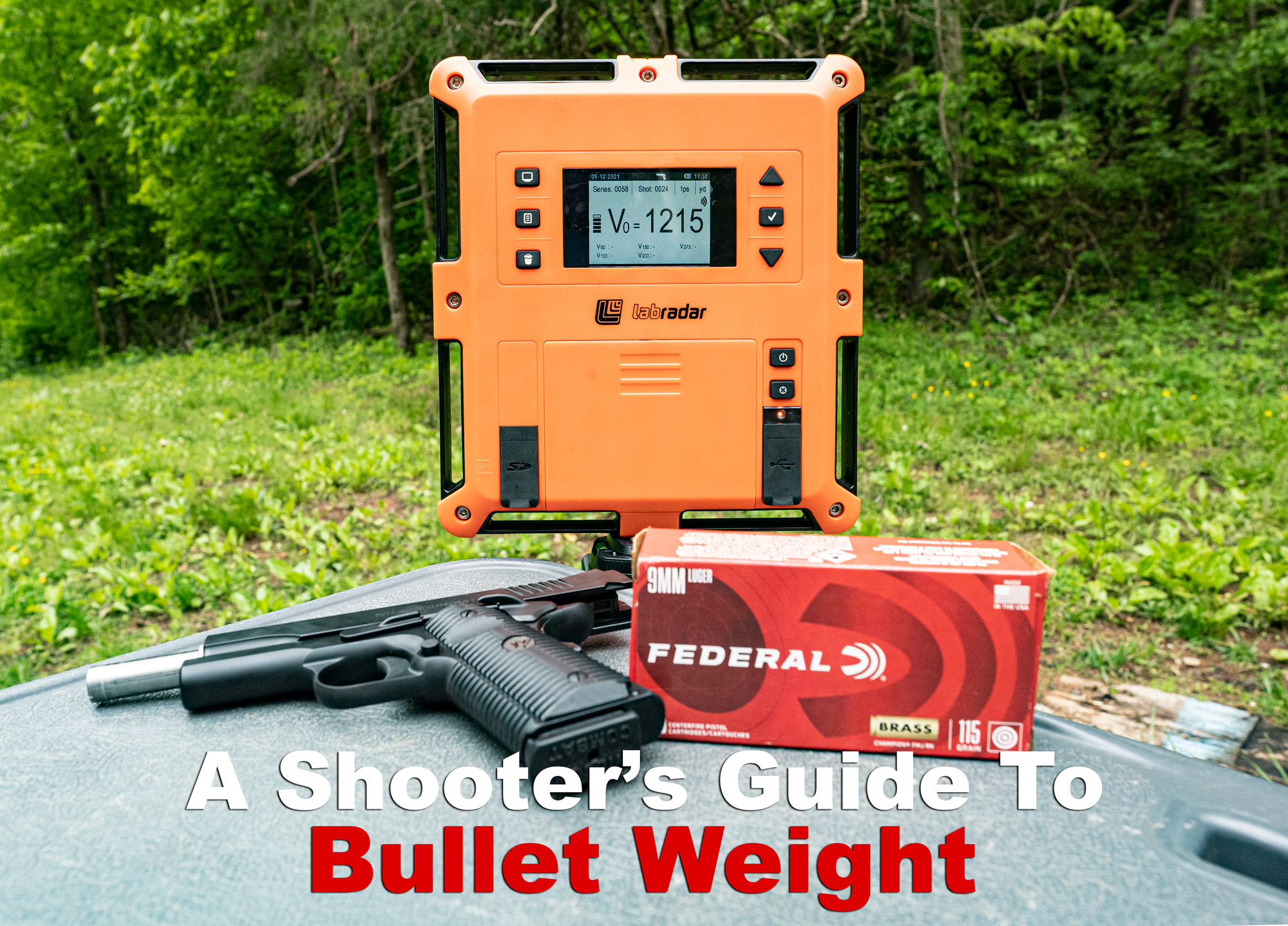
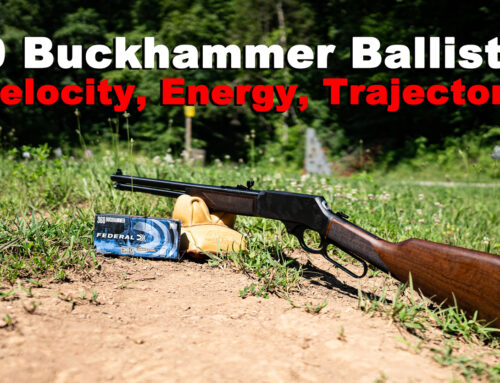
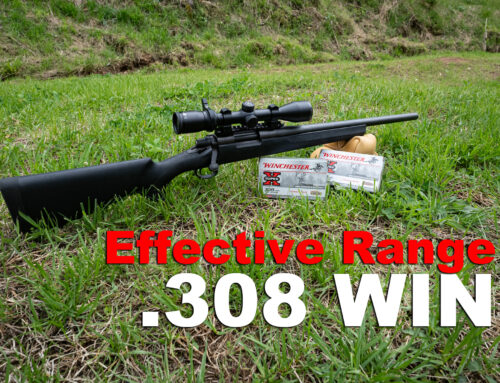
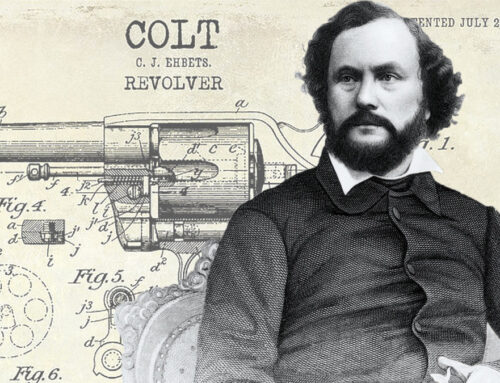
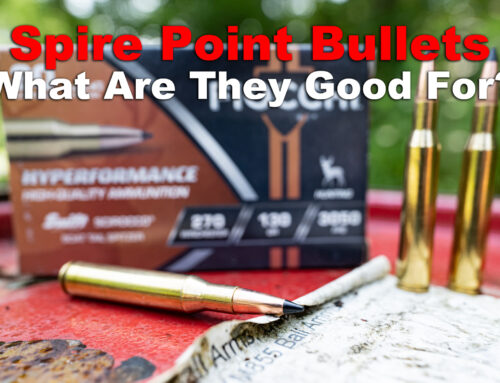
You need to work on your basic math skills first you said that there are 437.5 grains per ounce and that comes up to 7,000gr per pound then you say a 3,600gr bullet is 8 lbs
You’re right. We’re wrong. You’re smart. We’re dumb. You’re beautiful. We’re not attractive.
Not sure where the 8 pound remark came from initially or what we fat fingered into the calculator. You’re right Robert – a 3,600 grain bullet is just slightly more than half a pound.
Love a guy that’s willing to admit , they are not attractive! 😂 or when they are wrong…